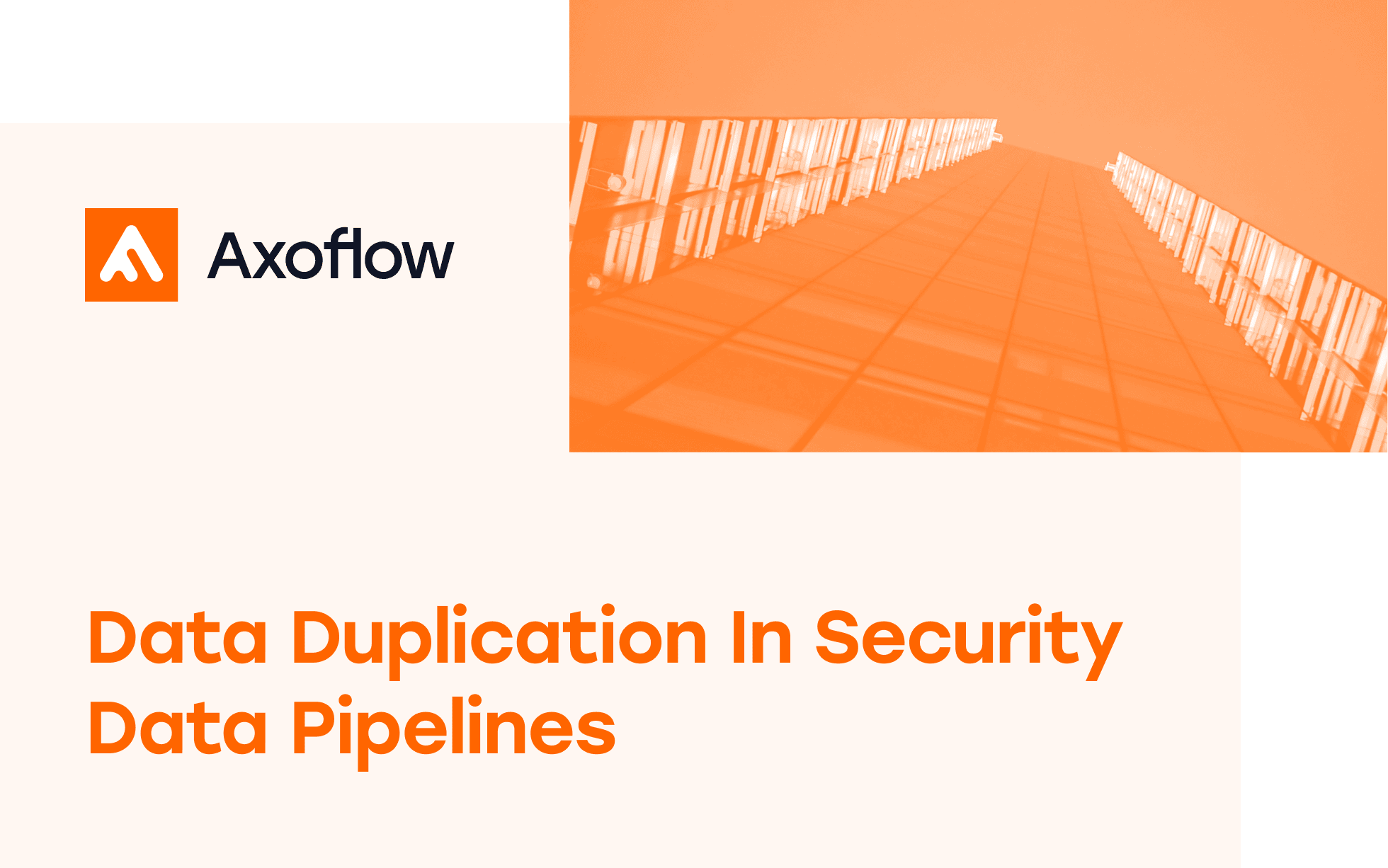
The Hidden Cost of Redundancy: Tackling Data Duplication in Security Data Pipelines
Security data pipelines are designed for resilience. Redundancy, failover, and parallel paths are commonly implemented to ensure log delivery even when the infrastructure fails. But those same fail-safes can backfire—quietly.
One of the most costly and often overlooked side effects of redundant log delivery is data duplication. The same log stream can be ingested multiple times into your SIEM, driving up license and storage costs, adding noise, and overwhelming your analytics layer.
Let's unpack how this happens, why it's difficult to detect, and how a well-instrumented pipeline can spot the problem, and in some cases, fix it automatically.
How Duplication Happens in SIEM Pipelines

Imagine two data centers—A and B—each equipped with their own log aggregators. To ensure high availability:
- Data Center A's sources may fail over to B's relay when A's relay fails.
- Once A is restored, both aggregators may continue forwarding logs.
- Now, your SIEM receives two copies of each log: one from A and one from B.
This mutual failover design avoids downtime, but introduces a silent problem: duplicate ingestion. These extra events aren't always byte-for-byte identical—they might have slight differences (like timestamps or relay-specific metadata)—which makes detection even trickier.
This pattern is common not just in data centers, but in cloud architectures too, where virtual machines or containers are auto-healing, causing log agents to restart and replay buffered data.
Why Data Duplication is a Problem
- Inflated SIEM Costs: Most SIEM platforms bill by ingested data volume. If your log volume doubles due to duplication, so does your bill—with no increase in visibility.
- Noisy Detections: Duplicate events can trigger false positives or flood detection engines. Behavioral analytics may become skewed due to repeated data.
- Wasted Storage: Retaining duplicated logs doesn't just cost money—it clutters your threat hunting datasets and slows down queries.
Why Data Duplication is Hard to Detect
Most SIEMs have limited visibility into the full delivery path of a log. They receive events from multiple sources and simply ingest whatever arrives. Without upstream context, they can't tell whether two similar logs are legitimate or redundant.
Compounding this, modern log formats often include dynamic fields (e.g., timestamps, IDs, routing metadata), so even truly duplicated payloads may appear different on the surface.
Why the Security Data Pipeline Is Best Positioned to Detect Duplication
This is where the security data pipeline plays a pivotal role. A well-instrumented pipeline sits between your sources and your SIEM, with visibility across all input streams. This allows it to detect when the same or nearly identical events are arriving from different delivery paths—in real time.
A pipeline can:
- Identify duplication patterns using payload similarity, sequence alignment, or timing correlation.
- Detect redundant log sources that appear to be echoing the same data.
- Alert operators or even automatically disable or throttle the redundant stream to prevent further duplication.
This is a unique capability. Log forwarders and SIEMs operate in isolation. Only the pipeline has a centralized, real-time view of the data flow—and can act on it.
What Can Be Done
Design Smarter Failover
Instead of mutual failover across peers, deploy highly available log aggregators in each zone or data center, and use deterministic routing with health checks.

Use the Pipeline for Deduplication
Modern pipelines can:
- Buffer and fingerprint incoming events
- Detect near-duplicates across time windows or delivery paths
- Route, suppress, or flag duplicates dynamically
This enables either human-in-the-loop decisions (via alerts or dashboards), or automated suppression when thresholds are crossed.
Monitor Upstream Metrics
Track which sources or relays are contributing the most volume growth. Sudden spikes might signal replay or duplication, especially after outages or config changes.
Final Thoughts
Redundancy is a virtue—until it quietly doubles your SIEM bill.
Security data pipelines, when designed with observability in mind, offer a way to preserve reliability without paying the duplication tax. By giving you visibility into where your logs are coming from and how they flow, the pipeline becomes more than a delivery mechanism—it becomes a control point for efficiency, cost, and data quality.
As your security architecture scales, so does the risk of invisible duplication. The sooner you bring detection and response into your pipeline, the better positioned you'll be to keep control of both your data and your budget.
Follow Our Progress!
We are excited to be realizing our vision above with a full Axoflow product suite.
Sign Me UpFighting data Loss?

Book a free 30-min consultation with syslog-ng creator Balázs Scheidler


